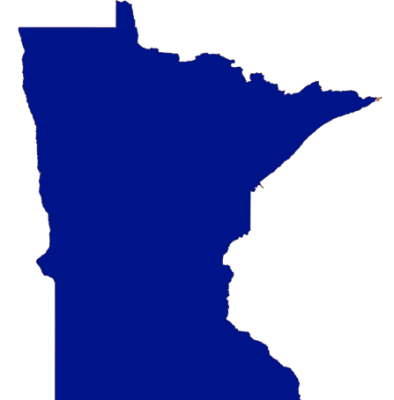Minnesota Policy Guide
Stated Goals
“To support the establishment of habitat for pollinators, songbirds, and other species at solar sites, and to generate other project co-benefits such as water management, grazing, and soil health.”
Objectives
Encourage site management practices that provide native pollinator habitat and reduce stormwater runoff and erosion at solar generation sites.
Set forth the requirements a project must follow to claim that a solar site provides benefits to pollinators, songbirds, and game birds and gain recognition under the Habitat Friendly Solar Program.
Settings
Project developer must:
- Locate solar projects outside of “remnant prairie and important habitats,” as defined by the Minnesota Dept. of Natural Resources (MDNR).
- Refer to MDNR’s Prairie Establishment & Maintenance Technical Guidance for Solar Projects document for design guidelines.
- Refer to Minnesota Board of Water and Soil Resources’ (BWSR) Sample Habitat Friendly Solar Planting Plan Specifications for project and seed specifications.
- Establish at least 85% of the site’s land area with native seed mixes.
- Prior to submitting a site permit application, obtain approval for vegetation management plan.
- Make the site’s vegetation management plan publicly available.
- Continue meeting standard requirements through annual inspections and submittal of monitoring forms.
Project developer must submit itemized documentation, including but not limited to:
- Complete Project Planning Assessment Form.
- Site plan with relevant map.
- Plan for project planting, including detail of native seed mix(es) (reporting rates in ounces/acre and seeds per sq. ft.), planting layout, and maintenance specifications).
- Any supplemental long-term management plans.
Implementation
Developed and administered by the Minnesota Dept. of Natural Resources (MDNR) in partnership with the Board of Water and Soil Resources (BWSR). MDNR addresses the regulatory aspect of solar site established, whereas the BWSR provide guidance through the Habitat Friendly Solar Program.
Mechanism
Voluntary program. Engagement with the Habitat Friendly Solar program may be voluntarily pursued by solar developers seeking to earn recognition for delivering solar sites that provide benefits to gamebirds, songbirds, and pollinators.
Monitoring
Monitoring of the site’s vegetation is required three times a year during the first three years of the project as vegetation establishes, and then twice a year in following years to determine maintenance needs. Site management practices are reported to the BWSR. Qualified natural resource staff must submit the “Established Project Assessment Form” with three site images to local government or other BWSR representatives – at the end of the third year of vegetation establishment, and every three years thereafter.
Other
Seed must originate from within 175 miles of the project site. Government staff must be allowed to conduct random inspection of seeds.
Resources
Minnesota Habitat Friendly Solar Program
State of Minnesota House of Representatives HF3353.1
Prairie Establishment & Maintenance Technical Guidance for Solar Projects
Guidance for Developing a Vegetation Establishment and Management Plan for Solar Facilities
Habitat Friendly Solar Site Assessment Form for Project Planning


